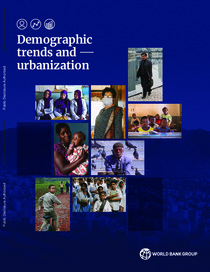Demographic trends and cities : Framing the report

World Bank - Washington, DC
2021
184 p.
environment ; urban development ; urban area ; demography ; migration
Community, housing and urban questions
English
Bibliogr.
"It is now widely accepted that the future is urban. Over 55 percent of the world's population lived in urban areas in 2018; by 2050, this proportion will grow to two-thirds. The United Nations calls urbanization one of four “demographic mega-trends” (UNDESA 2019), along with population growth, aging, and international migration. Yet patterns of urbanization are highly heterogeneous, both within and across countries. Asia and Africa will see both the largest numbers of urban dwellers and the fastest growth in urbanization. In fact, seven of the ten countries with the fastest projected urbanization rates between 2018 and 2050 are located in Africa. Burundi is expected to urbanize fastest in the coming decades, followed by Nepal and Malawi. Although global urbanization will continue, its pace is expected to slow in the future, with both the absolute size of the urban population and the proportion of urban dwellers likely to grow less rapidly (UNDESA 2019). Already, we are beginning to see shrinking cities in some parts of Eastern Europe, where both total population and urban population are declining. Since urbanization and urban growth are so disparate across geographies, the implications of these trends are also very localized. As Part II of this chapter, we highlight some global demographic trends and their implications for urban areas, while Part III will highlight some regional trends."
Digital
The ETUI is co-funded by the European Union. Views and opinions expressed are however those of the author(s) only and do not necessarily reflect those of the European Union or the ETUI.